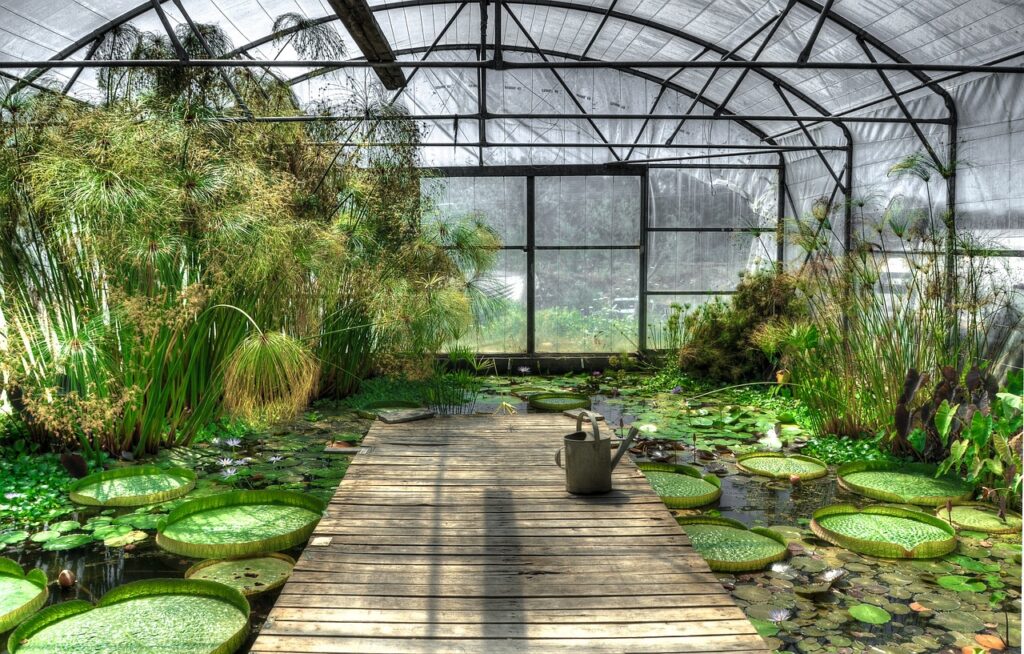Creating a mini indoor greenhouse is an excellent way to grow plants year-round, no matter the climate. Whether you’re looking to start seeds, grow herbs, or nurture delicate plants, an indoor greenhouse provides a controlled environment that promotes healthy growth. In this guide, we’ll walk you through the steps to create your own mini indoor greenhouse, offering tips on setup, plant selection, and maintenance.

Why Build a Mini Indoor Greenhouse?
A mini indoor greenhouse allows you to control the temperature, humidity, and light exposure for your plants, ensuring they thrive even in challenging conditions. It’s perfect for:
- Starting Seeds: Speed up germination and give your seedlings a strong start.
- Growing Herbs and Vegetables: Enjoy fresh herbs and small vegetables year-round.
- Protecting Delicate Plants: Create a safe environment for plants that need specific conditions.
What You’ll Need to Build a Mini Indoor Greenhouse
Before you begin, gather the following materials:
- Clear Plastic or Glass Container: Choose a container with a lid that can trap heat and moisture. Clear plastic bins, old aquariums, or even large glass jars work well.
- Shelving or Tray: You’ll need a flat surface inside your container to hold your plants. A small tray or rack can help organize pots.
- Grow Lights (Optional): If you don’t have enough natural light, consider adding grow lights to ensure your plants get the right amount of light.
- Thermometer and Hygrometer: These tools will help you monitor the temperature and humidity inside your greenhouse.
- Small Pots and Seed Trays: Depending on what you want to grow, you’ll need appropriate containers for your plants.
Step-by-Step Guide to Building Your Mini Indoor Greenhouse
1. Choose the Right Location
Select a spot in your home with plenty of natural light. A south-facing window is ideal, but if you don’t have one, you can supplement with grow lights. Ensure the area is easily accessible for watering and maintenance.
2. Prepare Your Container
Clean your chosen container thoroughly to remove any dust or debris. If using a plastic bin or aquarium, consider placing a small rack or tray inside to keep pots elevated. This allows for better air circulation and prevents water from pooling at the bottom.
3. Arrange Your Plants
Fill small pots or seed trays with potting soil and place them inside the container. Arrange them so that each plant has enough space to grow. If you’re starting seeds, make sure they are planted according to the instructions on the seed packet.
4. Add Grow Lights (If Necessary)
If your greenhouse doesn’t receive enough natural light, set up grow lights above your plants. LED grow lights are energy-efficient and can be adjusted to provide the correct light spectrum for different stages of growth.
5. Monitor Temperature and Humidity
Use a thermometer and hygrometer to keep an eye on the temperature and humidity inside your greenhouse. Most plants prefer temperatures between 65-75°F (18-24°C) and humidity levels around 50-70%. You can adjust the environment by opening the lid slightly or adding a small fan for ventilation.
6. Watering and Maintenance
Check your plants daily for moisture. The enclosed environment will retain humidity, so you won’t need to water as often. However, be cautious of overwatering, as excess moisture can lead to mold growth. Prune any dead leaves and keep the greenhouse clean to prevent disease.
Best Plants for a Mini Indoor Greenhouse
Not all plants are suitable for indoor greenhouses. Here are some that thrive in this environment:
- Herbs: Basil, parsley, mint, and cilantro are great for indoor greenhouses.
- Succulents: These low-maintenance plants enjoy the warm, humid environment.
- Seedlings: Start tomatoes, peppers, or other vegetables indoors before transplanting them outside.
Troubleshooting Common Issues
- Mold Growth: If you notice mold, reduce watering and increase ventilation.
- Leggy Seedlings: If seedlings grow too tall and thin, they may need more light. Adjust your grow lights or move the greenhouse to a sunnier spot.
- Temperature Fluctuations: If the temperature drops too low at night, consider adding a small heat mat under the greenhouse.
Conclusion
Creating a mini indoor greenhouse is a rewarding project that allows you to enjoy fresh plants all year long. With a bit of effort, you can provide the perfect environment for your plants to thrive, regardless of the weather outside. Whether you’re a seasoned gardener or just starting out, this mini greenhouse will bring the joy of gardening into your home.